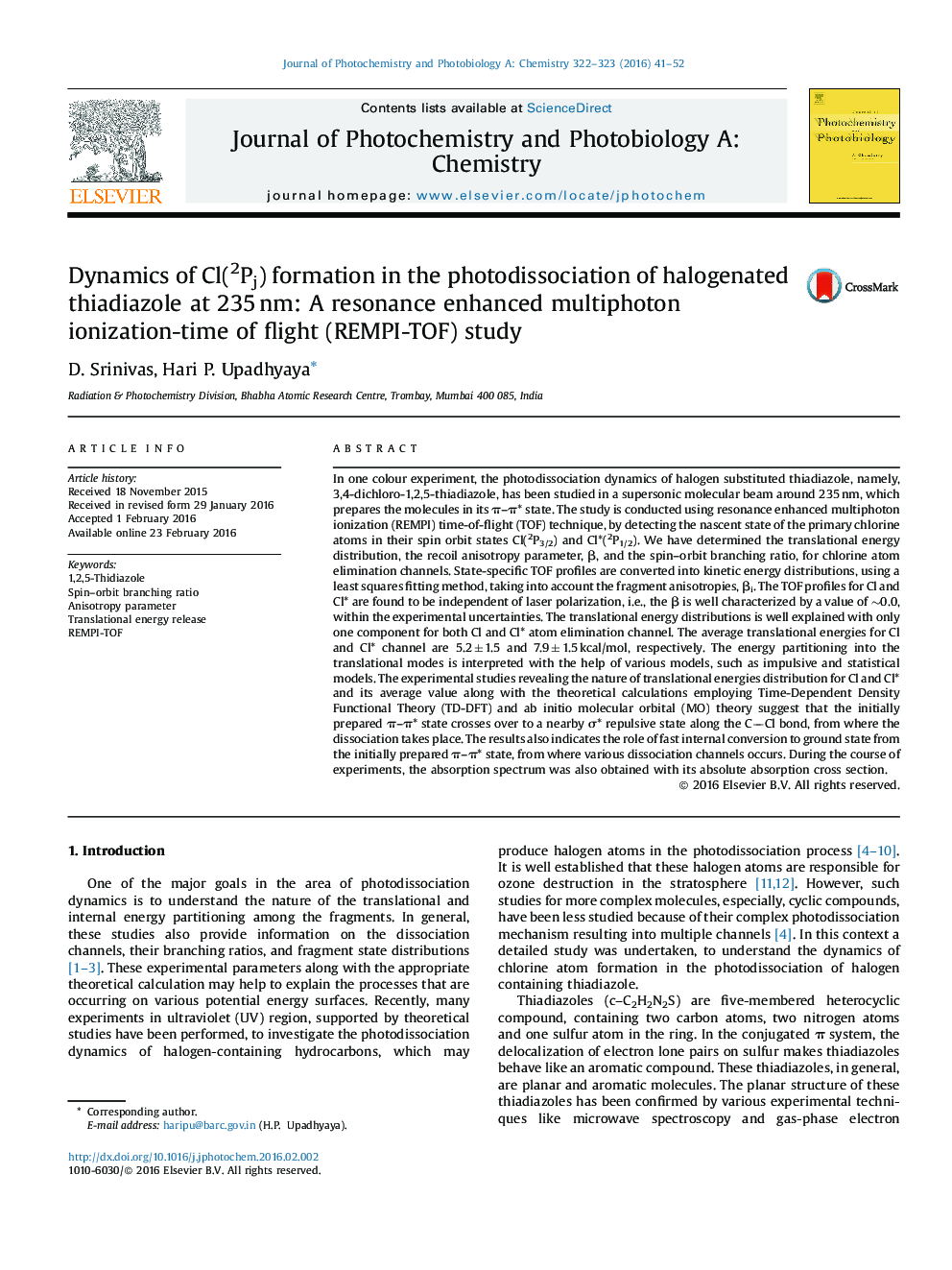| Article ID | Journal | Published Year | Pages | File Type |
|---|---|---|---|---|
| 26182 | Journal of Photochemistry and Photobiology A: Chemistry | 2016 | 12 Pages |
•First results on dynamics of Cl atom formation in the photodissociation of 3,4-dichloro 1,2,5-thidiazole.•Various mechanisms for Cl atom formation is reported.•Excited state calculation using Time Dependent-Density Functional Theory (TD-DFT) is performed for various states.
In one colour experiment, the photodissociation dynamics of halogen substituted thiadiazole, namely, 3,4-dichloro-1,2,5-thiadiazole, has been studied in a supersonic molecular beam around 235 nm, which prepares the molecules in its π–π* state. The study is conducted using resonance enhanced multiphoton ionization (REMPI) time-of-flight (TOF) technique, by detecting the nascent state of the primary chlorine atoms in their spin orbit states Cl(2P3/2) and Cl*(2P1/2). We have determined the translational energy distribution, the recoil anisotropy parameter, β, and the spin–orbit branching ratio, for chlorine atom elimination channels. State-specific TOF profiles are converted into kinetic energy distributions, using a least squares fitting method, taking into account the fragment anisotropies, βi. The TOF profiles for Cl and Cl* are found to be independent of laser polarization, i.e., the β is well characterized by a value of ∼0.0, within the experimental uncertainties. The translational energy distributions is well explained with only one component for both Cl and Cl* atom elimination channel. The average translational energies for Cl and Cl* channel are 5.2 ± 1.5 and 7.9 ± 1.5 kcal/mol, respectively. The energy partitioning into the translational modes is interpreted with the help of various models, such as impulsive and statistical models. The experimental studies revealing the nature of translational energies distribution for Cl and Cl* and its average value along with the theoretical calculations employing Time-Dependent Density Functional Theory (TD-DFT) and ab initio molecular orbital (MO) theory suggest that the initially prepared π–π* state crosses over to a nearby σ* repulsive state along the CCl bond, from where the dissociation takes place. The results also indicates the role of fast internal conversion to ground state from the initially prepared π–π* state, from where various dissociation channels occurs. During the course of experiments, the absorption spectrum was also obtained with its absolute absorption cross section.
Graphical abstractFigure optionsDownload full-size imageDownload as PowerPoint slide
